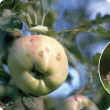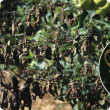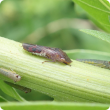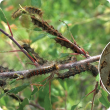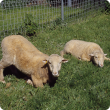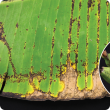Biosecurity & quarantine
The Department of Agriculture and Food, Western Australia (DAFWA) works with primary industries to safeguard our agricultural resources from biological threats and to maintain our export opportunities.
The State’s reputation is underpinned by a comprehensive biosecurity and quarantine system, developed and operated by DAFWA.
DAFWA is involved with:
- creation of surveillance and diagnostic programs
- animal and plant risk assessments
- importing and exporting requirements
- creating mechanisms to respond to incursions
- livestock movement and identification
- development and maintenance of biosecurity and quarantine legislation.
To find out more about what we do to protect agricultural production and export opportunities within the State please search our website.
Filter by search
Filter by topic
- (-) Remove Pests, weeds & diseases filter Pests, weeds & diseases
- Biosecurity (251) Apply Biosecurity filter
- Diseases (162) Apply Diseases filter
- Livestock biosecurity (120) Apply Livestock biosecurity filter
- Livestock health & diseases (114) Apply Livestock health & diseases filter
- Livestock & animals (114) Apply Livestock & animals filter
- Livestock disease surveillance (104) Apply Livestock disease surveillance filter
- Livestock species (81) Apply Livestock species filter
- Plant biosecurity (79) Apply Plant biosecurity filter
- Pests (74) Apply Pests filter
- Crops (72) Apply Crops filter
- Horticulture (59) Apply Horticulture filter
- Livestock management (45) Apply Livestock management filter
- Pest insects (42) Apply Pest insects filter
- Invasive species (36) Apply Invasive species filter
- Emergency animal disease preparedness (34) Apply Emergency animal disease preparedness filter
- Sheep (33) Apply Sheep filter
- Fruit (28) Apply Fruit filter
- Beef cattle (28) Apply Beef cattle filter
- Control methods (26) Apply Control methods filter
- Dairy cattle (22) Apply Dairy cattle filter
- Pest animals (20) Apply Pest animals filter
- Chemicals (20) Apply Chemicals filter
- Weeds (19) Apply Weeds filter
- Vegetables (19) Apply Vegetables filter
- Quarantine (19) Apply Quarantine filter
- Fungi (18) Apply Fungi filter
- Emergency response (16) Apply Emergency response filter
- Management & reproduction (14) Apply Management & reproduction filter
- Declared plants (14) Apply Declared plants filter
- Poultry & birds (13) Apply Poultry & birds filter
- Pigs (12) Apply Pigs filter
- Potatoes (11) Apply Potatoes filter
- Nursery & cutflowers (11) Apply Nursery & cutflowers filter
- Grapes & wine (11) Apply Grapes & wine filter
- Importing to Western Australia (10) Apply Importing to Western Australia filter
- Goats (10) Apply Goats filter
- Citrus (10) Apply Citrus filter
- Pest mammals (9) Apply Pest mammals filter
- Table grapes (8) Apply Table grapes filter
- Viruses & virus-like (8) Apply Viruses & virus-like filter
- Preventing residues (8) Apply Preventing residues filter
- Livestock movement & identification (8) Apply Livestock movement & identification filter
- Food, export & investment (8) Apply Food, export & investment filter
- Horses (8) Apply Horses filter
- Veterinary chemicals (7) Apply Veterinary chemicals filter
- Tomatoes (7) Apply Tomatoes filter
- Feeding & nutrition (7) Apply Feeding & nutrition filter
- Grains (7) Apply Grains filter


